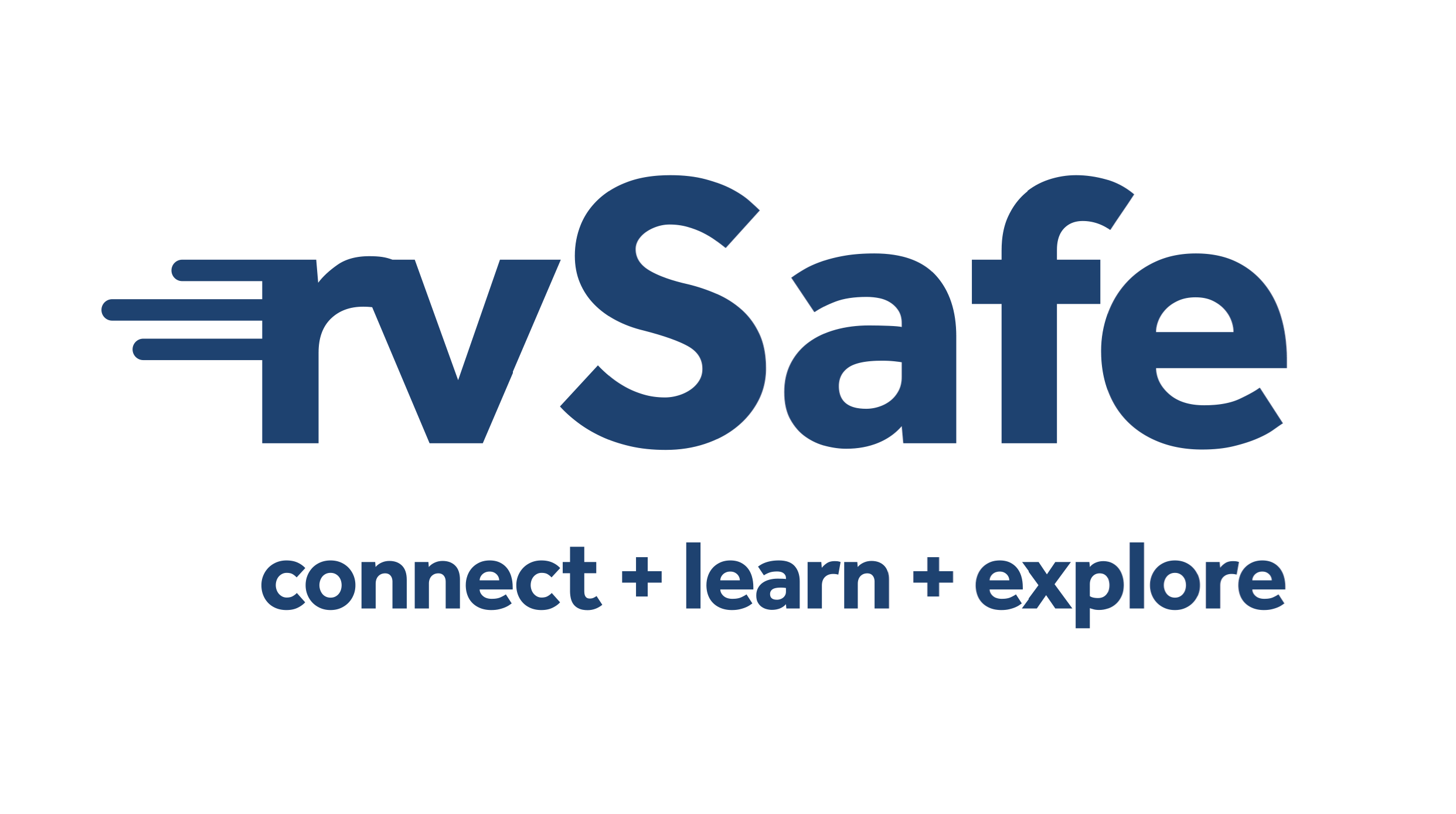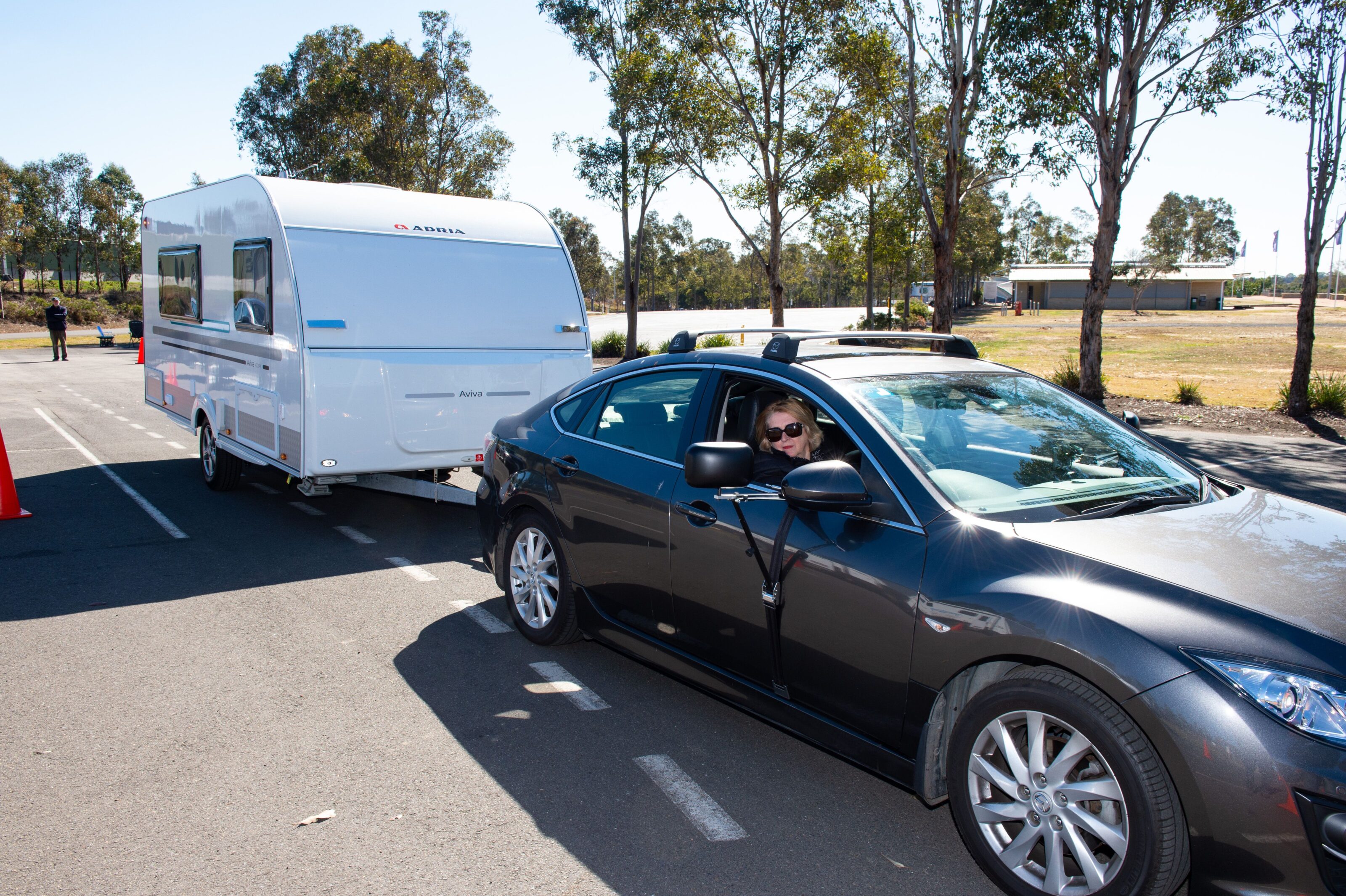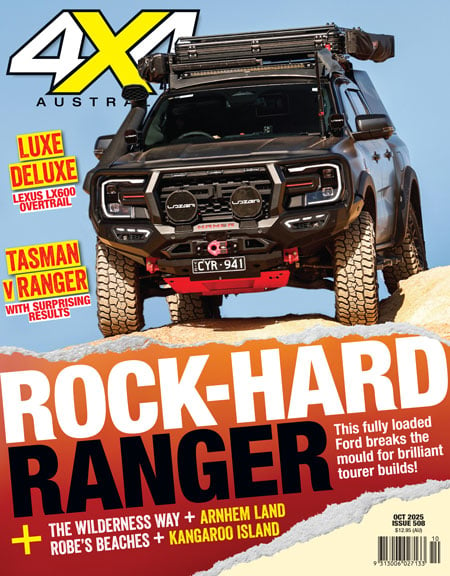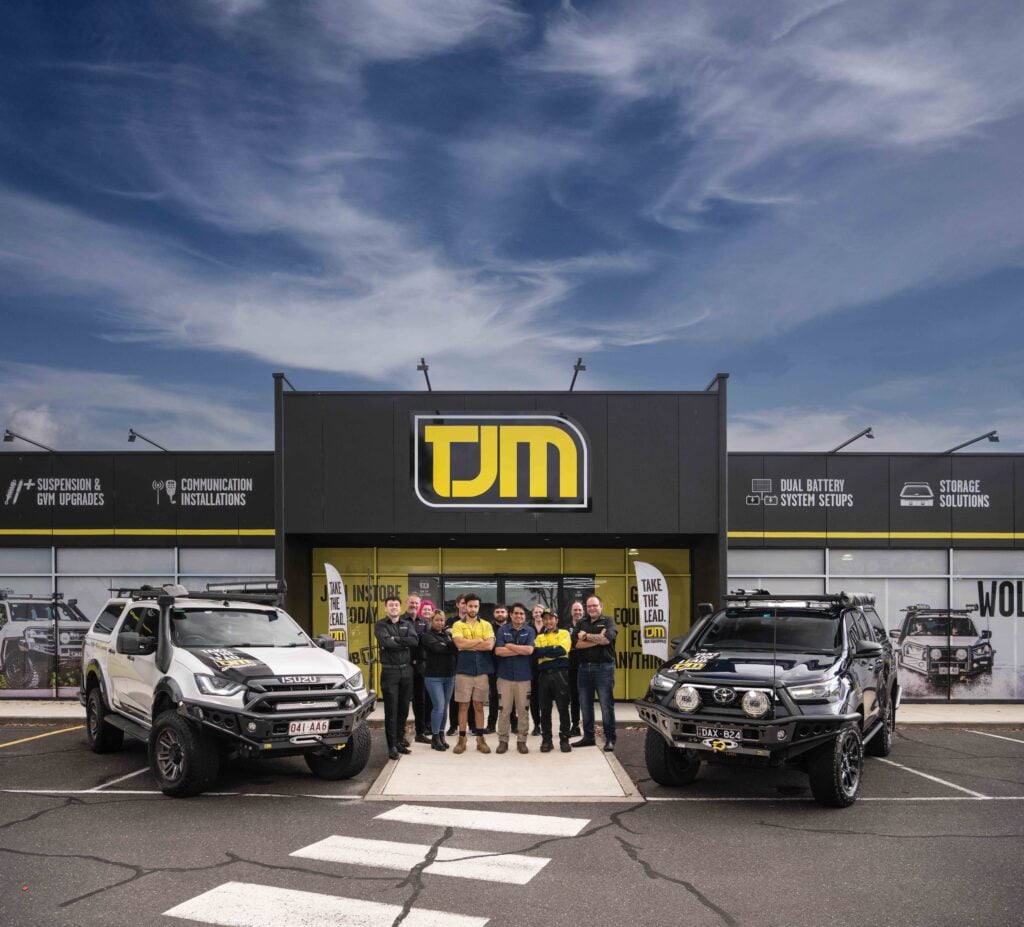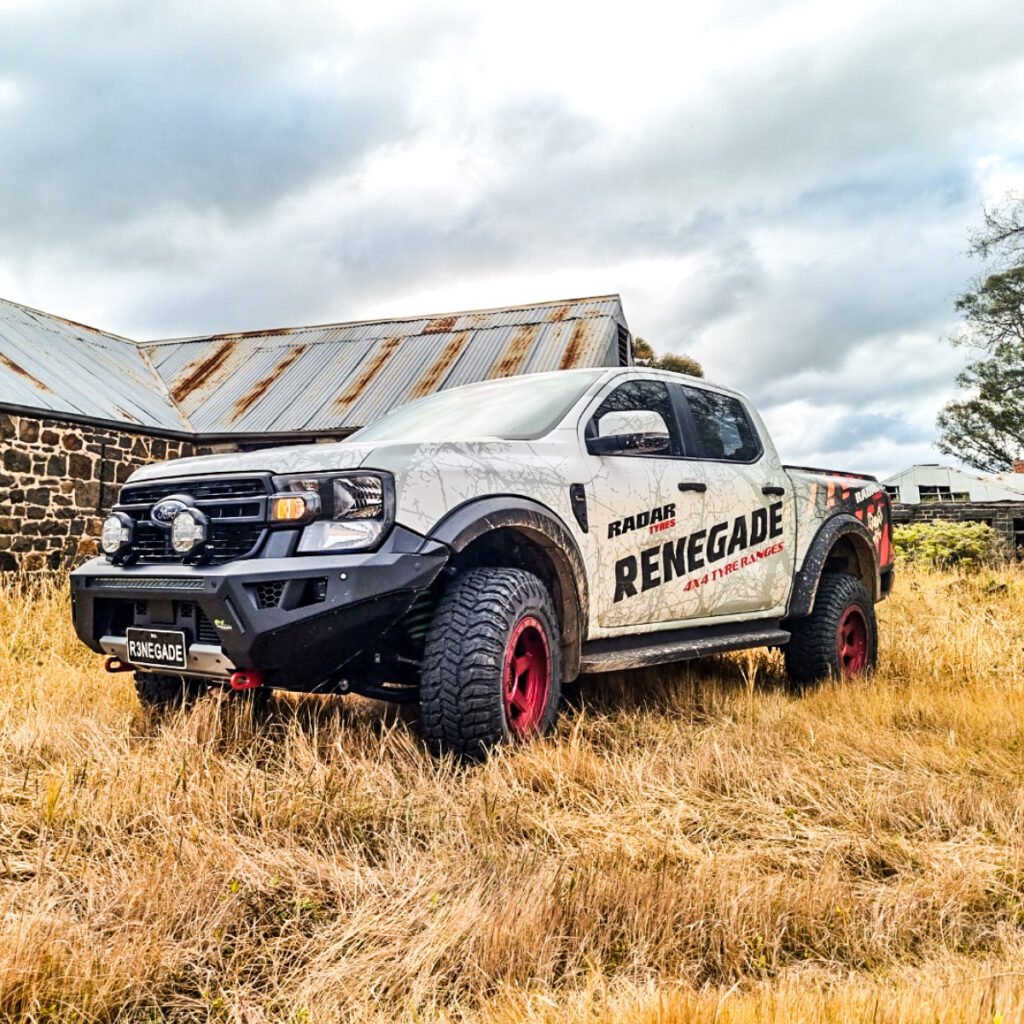In Australia, provided you have a full driving licence, and the caravan and tow vehicle don’t exceed the mass limits that involve an endorsed or heavy vehicle licence, you are permitted to tow a trailer or caravan.
Whilst special licensing requirements are mandatory for the operation of some vehicles and equipment, it may be surprising to learn that no such requirements exist when it comes to towing.
If you don’t need to undergo training or pass a test to hit the open road with a trailer or caravan in tow, you’re probably thinking the skills necessary to tow must come naturally. The truth is, towing a trailer or caravan can be tricky for those with no or little experience and requires a specific set of skills and techniques.
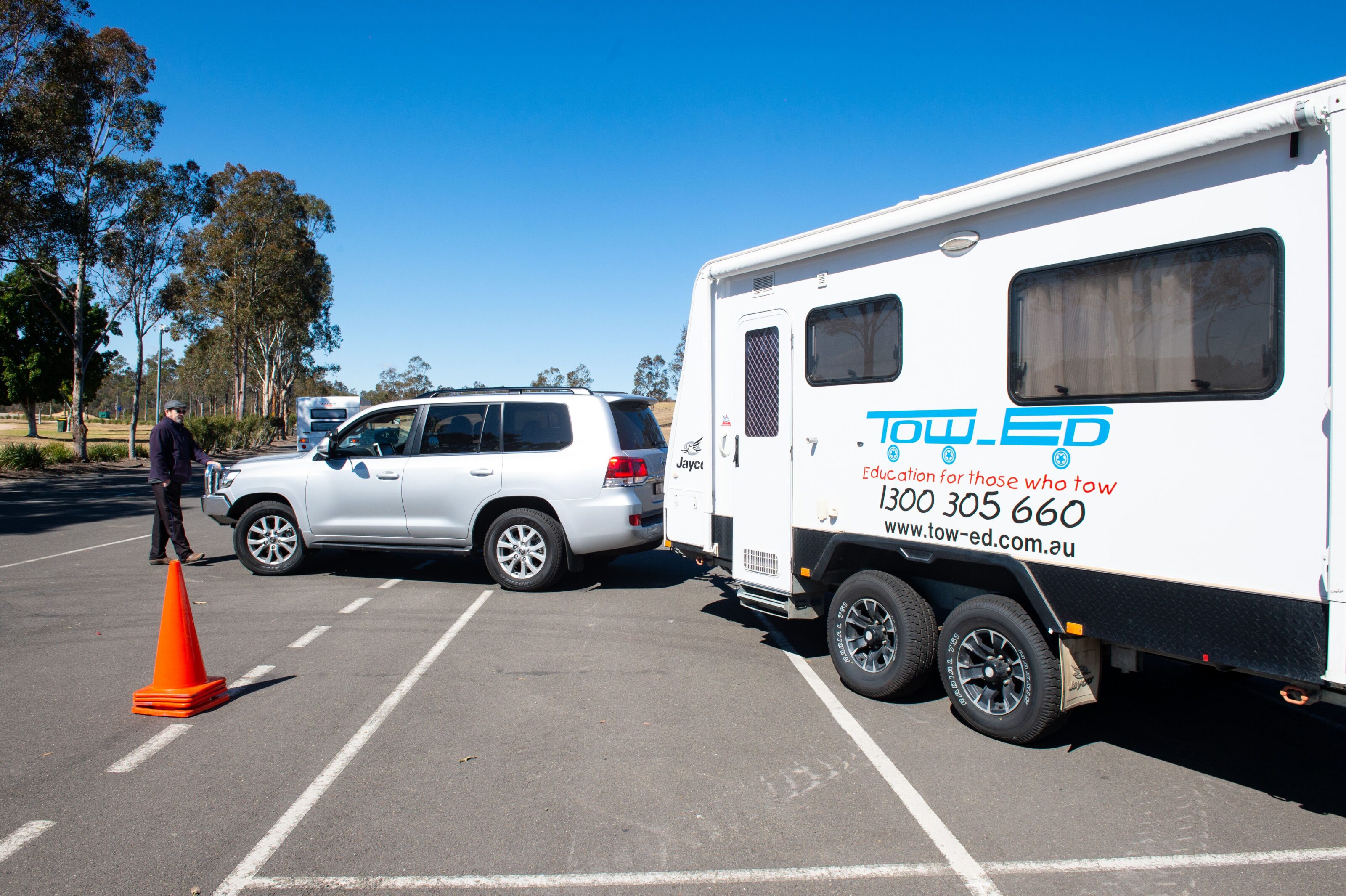
If you are new to towing and don’t know where to start or have little experience and want to become more confident in your towing skills, you should consider completing a towing course. An accredited towing course will guide you through the basics of manoeuvring your combination safely on the road and in a caravan park, but also impart essential knowledge regarding weights, legalities, roadcraft and vehicle setup to ensure you are as safe as possible while towing.
rvSafe provides all the knowledge you need to head out safely on the road in your RV. But here are two of the most stressful issues for those new to towing!
Caravan Sway
Caravan sway can be scary and rightly so. Whether you have experienced caravan sway or only heard the stories and seen dash cam footage, most people that tow caravans are aware that sway may occur.
The most common cause of trailer sway is an incorrectly loaded caravan. When packing, it is important that heavy items are placed as close to the caravan axle as possible. Packing too heavily towards the rear of the caravan can result in instability.
Generally, you should aim to keep your tow ball weight between around 10% of your ATM or Aggregate Trailer Mass. Going below 10% can result in trailer sway and going above 10% can put excessive weight on the back of your car and will affect your vehicle’s handling.
Keep in mind that sway can also be caused by wind. This can be from the weather, so on a high wind day, avoid towing if possible. Even an unexpected strong gust can cause some sway. A large vehicle travelling at speed and overtaking can also cause sway. The rush of air between the vehicles can cause instability.
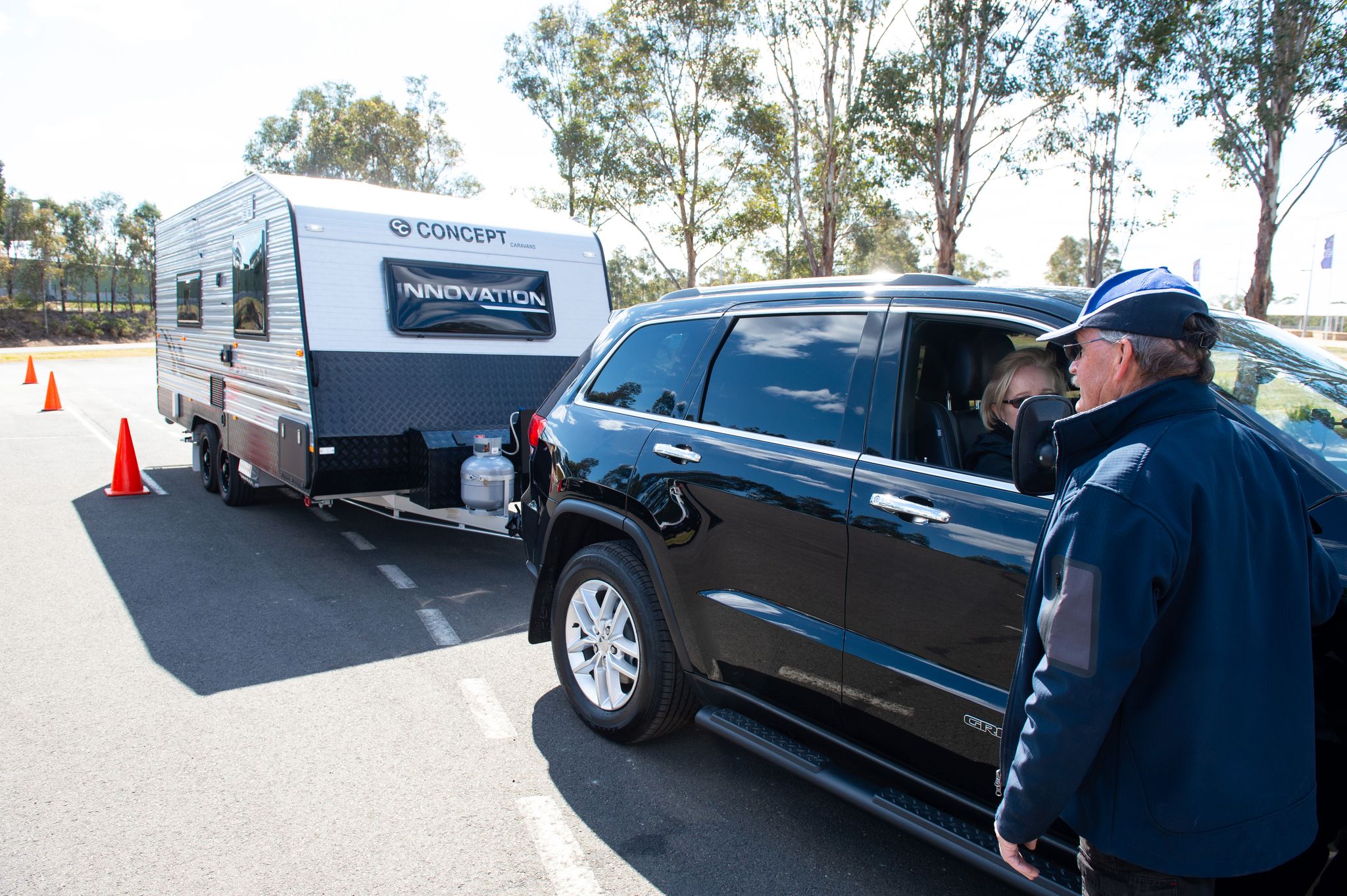
As speed increases, stability decreases. Stick to a safe speed for your vehicle and conditions.
Also ensure that you have the correct tyre pressures for your combination by checking your manufacturers recommendations. Underinflated tyres will cause excess movement in the tyre wall. Overinflated tyres will not be able to minimise shocks from the road surface and lead to instability.
If your trailer does start to sway – do you know how to regain control?
The most effective way to minimise sway is to decrease speed by removing your foot from the accelerator and applying your trailer brakes. The effect of this will pull the trailer straight behind the tow vehicle and you will begin to regain control.
Sudden moves will always make the situation worse. Ensure you hold the steering wheel steady and don’t make any sudden turns.
It is a great idea to practise reaching for the trailer brakes when stationary. That way you instinctively know where the control is. You can get the control fitted so that it is central in the vehicle and your passenger can apply the trailer brakes if your hands are too busy holding the steering wheel steady.
Ensure you have your electric brakes set up suitably for your trailer. There are various models available so check your manufacturer’s instructions to work out what is right for you.
Electronic Stability Control (ESC) is a great safety feature to reduce the chance of caravan sway. The ESC system installed on a caravan uses a sensor underneath the van to monitor sideways movements, small oscillations or sudden jerks. When these forces cause the van to lurch to a critical point, the system applies selective braking to bring the van back into line. Essentially, ESC will apply the trailer brakes for you if things start to get a bit hairy and are more likely to react faster than you as the driver.
As good as ESC systems are, they aren’t infallible and are not a replacement for careful driving, which is still the most effective tool to combat the dreaded sway and keep you and your family safe on the road.
Reversing a Caravan or Trailer
Reversing a caravan or trailer is challenging and can be extremely difficult for new caravan owners. But fear not! It is achievable for everyone. Just take the time to practise and get to know how to manoeuvre your vehicle.
It is imperative that you learn how to reverse as you may need to do this to get out of a tricky situation, or you may also find that knowing how to reverse will help you enjoy some better camping sites.
The first thing to do when mastering caravan and trailer reverse skills is to practise. Before heading off on your journey, find a quiet carpark or paddock where you can practise manoeuvring without the worry of other vehicles, people or being on time. If possible, take a friend with you so that they can help guide you. Remember, patience is key, and practice makes perfect.
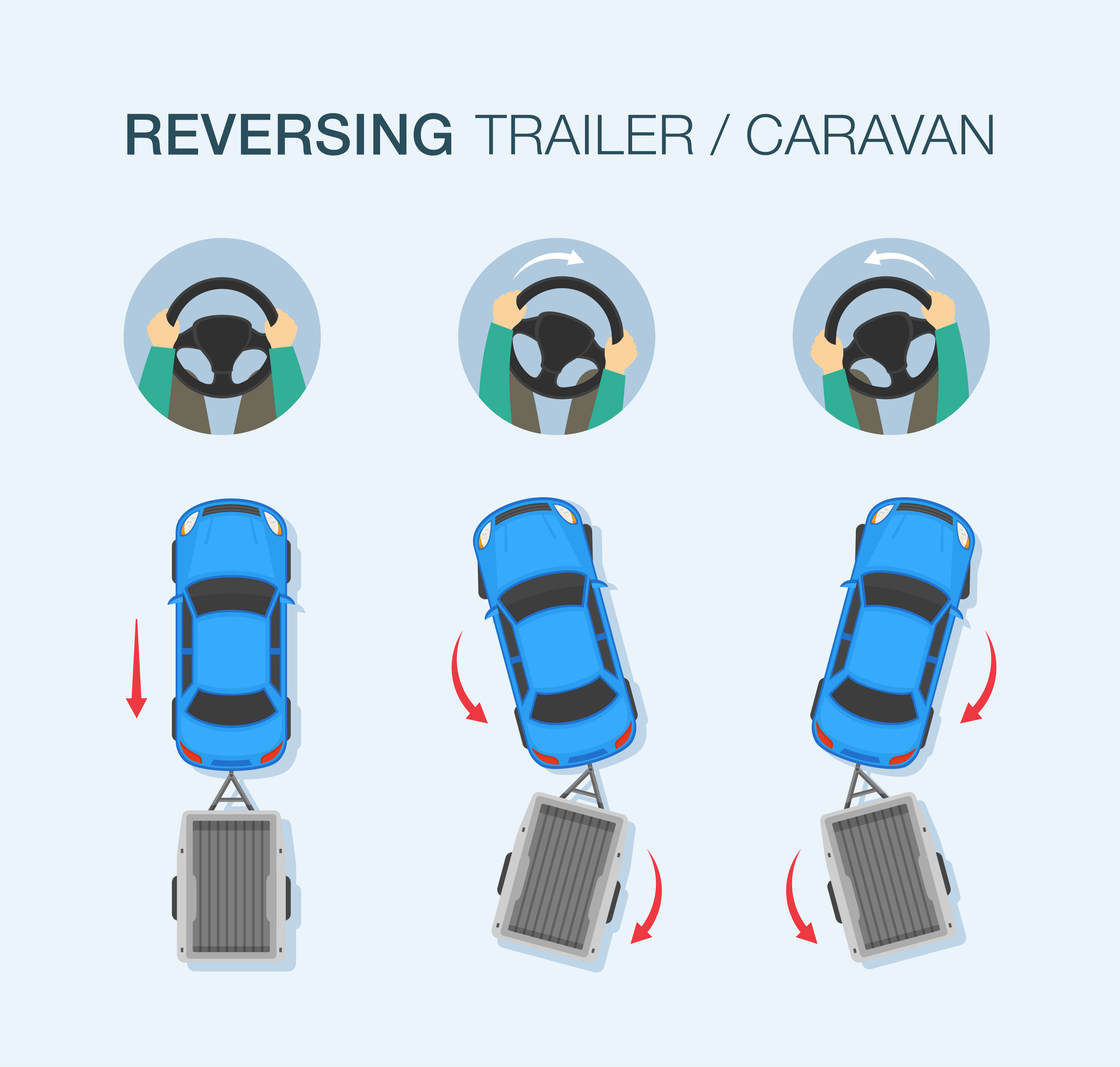
When you are about to reverse your caravan or trailer, first get out of the car and look at your surroundings and check whether the vehicle and caravan will fit and pace out the area. It is also a good idea to take into consideration the space needed for an awning or annex and factor this into your checks.
If possible, try to reverse from the right and position your caravan or trailer so that it is pointed in the direction that it needs to go. If you have a friend to assist, make sure that they are clear with their communication and instructions.
Once you have the caravan or trailer positioned, apply the opposite rule. If the caravan needs to go right, turn the steering wheel to the left and vice versa. Next, slowly begin reversing. This is where it is important to practise so you gain the feel of which way to turn and work out what works best for you. Remember, gradually reverse, and turn the steering wheel. Only use small turns as the caravan or trailer will amplify the movement.
If you happen to oversteer or miss where you need to go, move forward until you have the caravan or trailer in the correct position, stop, and reverse again. Once you have successfully reversed the caravan or trailer and it is in its correct position, perform necessary safety checks such as ensuring the handbrake is set, and the wheels are chocked and cannot move.
Lastly, enjoy your adventure!
More information
rvSafe is designed to increase road safety awareness and education specific to the RV industry. The project is funded through the Federal Government’s Road Safety Awareness and Enablers Fund and is proudly supported by the Campervan & Motorhome Club of Australia (CMCA). Find out more at rvSafe.com.au and cmca.net.au
